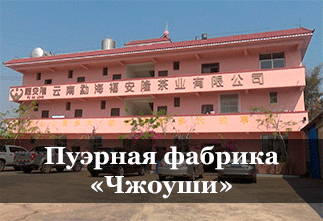The aroma of Nomi grass leaves (糯米香叶子, nuòmǐ xiāng yèzi, Nomi Xiang Yezi) is formed in pu-erh by mixing Nomi leaves and stems with tea raw materials in a certain proportion.
When dry, the pancake has a complex, moderately piquant aroma. In the foreground, the trail of Nomi is clearly felt with a hint of beetroot and potato notes.
This puerh needs to be washed, and after washing the aroma of Nomi is intensified, adding notes of last year's leaves and forest moss.
The taste of brewed tea is bright, complex, spicy-woody, with a slight bitterness and nuances of medicinal herbs. The taste includes Nomi grass, dried autumn leaves and citrus bitterness at the end of the sip.
By the 3rd pour, the Nomi notes fade, revealing baked beans, roasted cashews, and fruity tones with citrus freshness.
This puerh can withstand 7 full steepings. Brew with water at a temperature of 95-98 °C, taking 5-7 g of tea per porcelain gaiwan with a volume of 150-200 ml.
The amber-colored infusion leaves a slightly sweet aftertaste.
Nomi herb has a hematopoietic effect, "fills the void" (trad. Chinese, med.), suppresses sweating and has a beneficial effect on the spleen. Suitable for women, small children and the elderly.
Sheng puer "Nomi Xiang" perfectly tones, gives strength and energy, warms and balances well
This product is a kind of medicinal complex that will be of interest to lovers of pu-erhs with a non-standard taste and aroma.
|
Country
|
China |
|
Provinces
|
Yunnan (云南) |
|
Manufacturer
|
Чжоуши (周氏) |
|
Year of pressing
|
2015 |
|
Pressing form
|
Bing Cha (Cake Tea) |
|
Declared weight, g
|
357 |
|
Size
|
20x20x2 |
|
Length, cm
|
20 |
|
Width, cm
|
20 |
- Комментарии
- Вконтакте
Pu-erh is one of the most unique types of tea, which only gets better with age. Many people, when they first encounter this tea, wondered: why is pu-erh more often found in pressed form (cakes, bricks, tochas), and not in loose form? The reasons for this are related to both history and the practical aspects of storing and fermenting tea. Despite modern technologies that allow the production of loose pu-erh, the shape of pressed cakes remains unchanged. And pu-erh is more often found on sale in pressed form, for example, in the form of cakes or bricks, and loose pu-erh is less common. We will talk about the reasons for pressing pu-erh into cakes in this article.
Puer is a unique Chinese tea that is distinguished by its depth of taste, complexity of aromas and versatility of aftertaste. Its taste characteristics are formed under the influence of many factors, from growing conditions to the brewing method. Let's look at the main ones.
Well, finally we got to the Zhoushi puer factory, which is located in Menghai, Yunnan Province. We first purchased their cakes remotely several years ago and they were to the taste of Russian tea people. Now it's time to personally meet the owners and expand the range of this brand on the shelves of ChL. In this video, you will see the production process of the already familiar cakes, rare shots of the nuances of packaging and the atmosphere of such places.




















































































